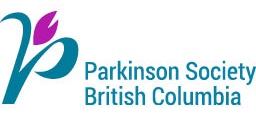Low Blood Pressure
Orthostatic hypotension, also known as postural hypotension, is defined as a fall in systolic blood pressure (the top number) of at least 20 mm Hg and/or diastolic blood pressure (the bottom number) of at least 10 mm Hg within three minutes of standing up from a seated or lying down position. It may be symptomatic (dizziness, fainting) or asymptomatic (showing no symptoms).
People with Parkinson’s (PD) who have a combination of orthostatic hypotension and impairment of postural reflexes (a dysfunction in the body’s ability to maintain its posture when changing position or moving) are prone to dizziness, fainting, and falls, leading to fractures. Fractures have serious consequences for the long-term health of people with PD, and a safety assessment from a rehabilitation specialist is strongly recommended. Lying and standing blood pressure recordings are essential as diagnostic measures.
Triggers for dizziness and fainting include:
- taking tablets to lower your blood pressure, or drugs known to lower blood pressure (e.g. tricyclic antidepressants, such as amitryptiline, nortryptiline, doxepine) when taking PD medication
- increasing the dose of your PD medication too quickly, particularly dopamine agonists (e.g. bromocriptine, pergolide, ropinerole, or pramipexole)
- taking PD medication on an empty stomach
- the hour following medications, or a meal
- urinating standing up
- having a bowel movement
- lying flat for too long
- getting up too quickly from a bed, chair, or after a bowel movement
- warm weather, dehydration, and hot baths
Prevention
Orthostatic hypotension can be treated by restoring normal blood pressure through lifestyle changes and medication. For short-term relief and prevention, consider the following strategies:
- Increase intake of fluids and salt.
- Avoid or limit alcohol intake, as it can worsen orthostatic hypotension (Mayo Clinic, 2022).
- Wear compression stockings that go up to your waist. These can improve blood flow, but make sure to take them off before sleeping or lying down (Mayo Clinic, 2022).
- Have a six to eight oz. glass of orange juice before you get out of bed each morning. Sit on the side of the bed for a few minutes before you get up.
- Strong coffee with breakfast, and a small cup after meals, can help increase blood pressure.
- Increasing clear fluid intake until about 4:00pm will limit your need to take trips to the bathroom during the night, which can be a major fall risk.
- Remain seated after a meal for about 20 minutes. Blood is drawn to the gastrointestinal tract to aid digestion, which is why we feel sleepy after a large meal. If you stand up quickly after a meal, there may not be enough blood volume to supply the brain.
- If you find large meals exacerbate the condition, try having smaller meals throughout the day (Mayo Clinic, 2022).
- Sit down to towel off after a shower or bath and get up slowly afterwards.
- Regular exercise can help improve orthostatic hypotension, but make sure to limit heavy exercise in hot or humid weather (Mayo Clinic, 2022).
If postural hypotension persists despite these measures, your doctor may suggest reducing, stopping, or replacing drugs that are lowering your blood pressure. If this is not possible, the doctor may recommend an antihypotensive, such as fludrocortisone or midodrine, which will artificially raise your blood pressure.
If you have very low blood pressure, you may be at risk for supine hypertension. This means that your blood pressure may go up too much when you are lying down and subsequently drop when you stand up. To manage this, be sure that your head is 30 degrees higher (about six to nine inches) than your feet when you are lying down. You may consider sleeping in a slightly reclined position instead of lying fully flat.
Sources
Mayo Clinic. (2022, May 26). Orthostatic hypotension (postural hypotension). www.mayoclinic.org/diseases-conditions/orthostatic-hypotension/diagnosis-treatment/drc-20352553
Pacific Parkinson’s Research Centre, University of British Columbia, Vancouver.
Last updated: August 14, 2023
